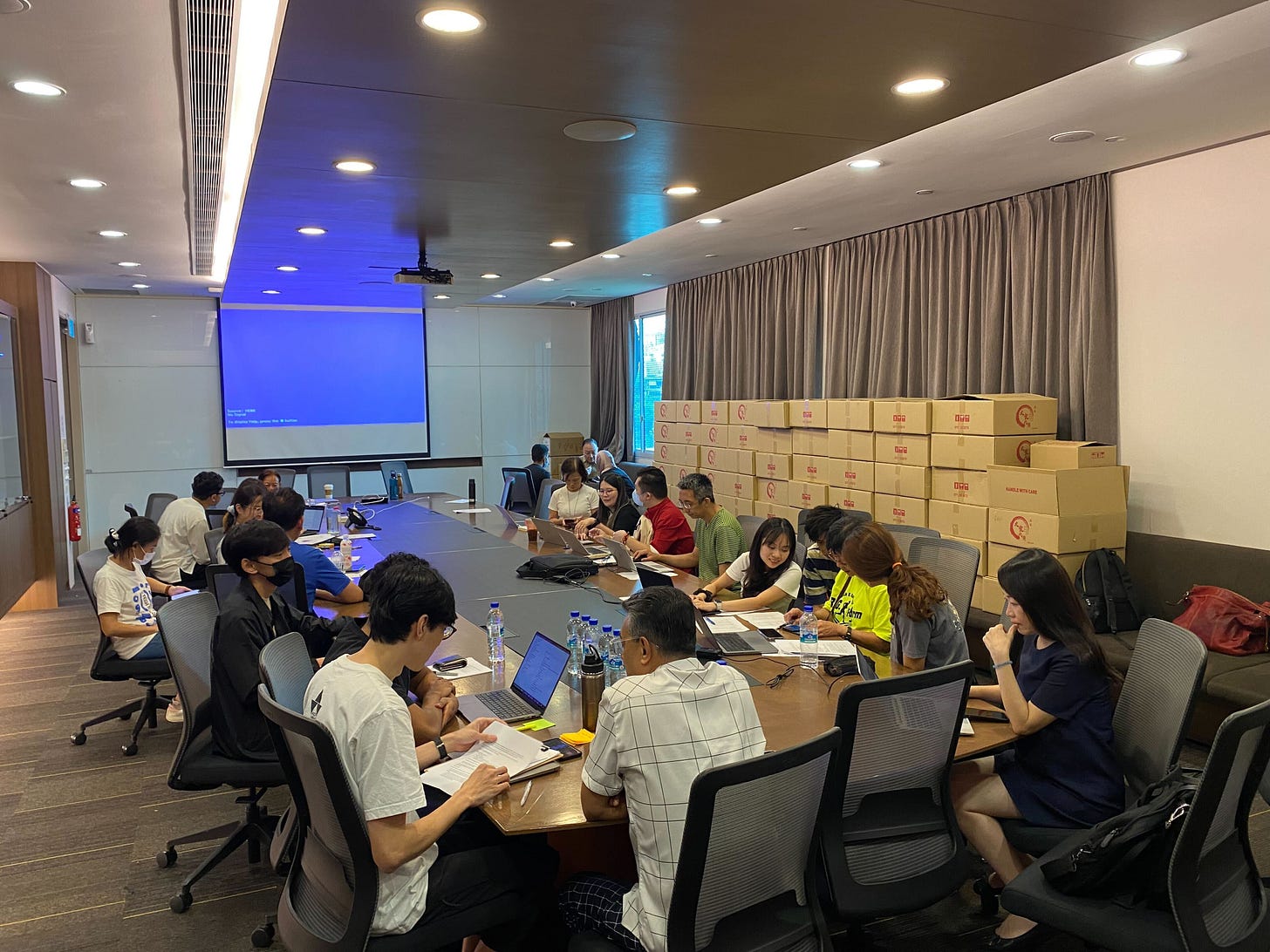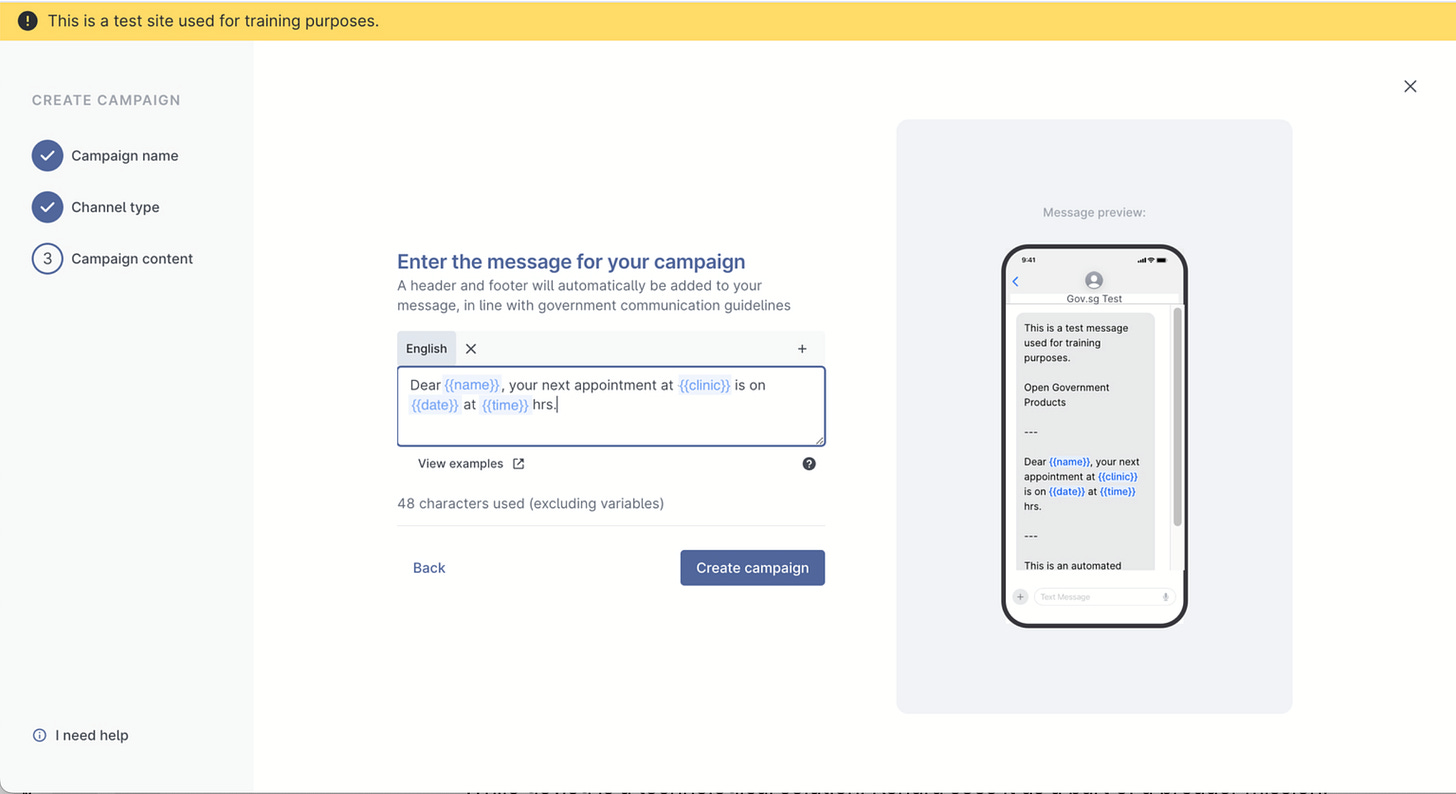Scaling Trust: The Challenges of Launching gov.sg
Kendra Wong and Amanda Tan reflect on the technical, operational, and human challenges behind rolling out a secure messaging channel across government.
When the gov.sg Sender ID officially launched in July 2024, it marked a critical step in securing government communications against scams. But behind what might seem like a simple change was a complex effort involving infrastructure upgrades, security enhancements, and cross-agency coordination.
Before the introduction of the gov.sg Sender ID, government agencies used various methods to send official SMSes and emails—some of which relied on Postman, a secure messaging system built by OGP for government agencies and officers. However, as scam tactics evolved, so did the need for stronger safeguards. Scammers were increasingly impersonating government agencies via SMS, exploiting the absence of a clear, reliable way for the public to verify legitimate government communications.
To address this, the gov.sg Sender ID initiative was introduced—a centralised, trusted channel that ensures all government messages come from a verified source.
But launching this system across agencies at scale was no small task. Onboarding over 100 agencies, integrating with 200+ systems, and maintaining security for 47,000+ users—all within tight deadlines—posed immense challenges. For Kendra Wong and Amanda Tan from Product Operations, making it happen was no easy feat. It was a test of adaptability, problem-solving, and perseverance.
Onboarding Agencies
Unlike other products at OGP which required outreach and adoption efforts, this initiative was driven by the rise in government impersonation scams. As a result, Product Ops’ role shifted from persuading agencies to adopt the product to guaranteeing their timely onboarding.
“The challenge for Product Ops was about how to onboard every single use case in time, especially considering there were hundreds of agencies with tens of thousands of users,” said Kendra, Senior Product Ops Specialist. When she first took on the onboarding process, she was the only officer handling it. “It was overwhelming at first. Agencies had different systems, users had varying levels of technical knowledge, and we had to make sure everything was working as intended before launch.”
Support eventually came from Assurity and GovTech, as well as internal hires, but making sure every agency understood the initiative and followed the right steps remained a pressing concern. With agencies operating on different levels of technical expertise, Product Ops had to facilitate the onboarding process seamlessly. To manage this, they introduced:
Video call tutorials to walk agencies through the transition
Weekly clinics for agencies to clarify doubts
One-on-one support for agencies that needed extra guidance
Streamlined administrative processes to make access to gov.sg smoother
“We tried to make onboarding as personal as possible so agencies knew they had a direct line to us,” Kendra explained. The variation in systems and user bases across agencies meant there was no one-size-fits-all approach, and each transition required hands-on coordination to get it right.
But onboarding was only part of the challenge—the Product Ops team also had to rapidly develop technical expertise to support agencies effectively.
Technical Learning Curve
“There was a lot that Ops had to learn—how APIs work, how to troubleshoot, how to query our database,” Kendra noted. Some agencies had highly complex systems and more technical users than the team, requiring them to bridge knowledge gaps in real time.
Amanda, Product Ops Specialist, recalled another key challenge—agency misconceptions about message delivery. Many assumed that once a message was sent, it was delivered. However, logs and error codes showed that this wasn’t always the case. “When we provided this information, that’s when they understood that not all messages reached the public as intended,” she said. Helping agencies navigate delivery reliability became a crucial part of onboarding.
“People assume Sender ID is just a label. But for gov.sg to actually work at scale, there were deep integration requirements, delivery checks, and constant monitoring,” Amanda explained. “It’s not just about the name, it’s about the infrastructure behind it.”
“Sometimes, agencies would come to us frustrated that their messages weren’t going through, and we had to help them figure out why. It was a lot of troubleshooting, but it was also about helping them see things from the system’s perspective,” Amanda added.
Sustaining Trust in Government Communications
Launching gov.sg was a major milestone but keeping it running and reliable has been an ongoing effort. For Kendra and Amanda, the work didn’t stop at launch. Until today, they continue to support agencies and new users, ensuring campaigns run smoothly and the initiative remains widely adopted.
Since its launch, the gov.sg Sender ID has delivered over 49.4 million SMSes with zero scam messages sent via the channel. A nationwide study in October 2024 found that 80% of respondents would open an SMS from ‘gov.sg’. The top reason they cited was trust that the message was legitimate, demonstrating they found the Sender ID to be credible.
While gov.sg is a technological solution, Kendra sees it as a part of a broader mission: maintaining public trust in government communications. “Singaporeans are very trusting, but if we don’t act and protect that trust, it could erode,” she reflected.
The goal of gov.sg goes beyond securing messages. It’s about helping citizens quickly recognise what is official and who to trust. In a landscape where scams are growing more sophisticated, people rely on familiar cues like a trusted name or consistent format to assess if a message is real. Without clear signals, legitimate messages can easily be mistaken for scams.
By standardising government SMSes under a single Sender ID, gov.sg offers Singaporeans a way to identify trusted communications, reducing confusion and encouraging stronger engagement with public services.
Amanda shared a personal story that brought this impact to life, “I watched my mother redeem her CDC vouchers at Sheng Siong, and I felt so proud. She’s not very tech-savvy, but she knew exactly what to do. I didn’t need to guide her. She understood that the SMS she received from gov.sg was safe and followed the steps on her own.”
She added, “Good user education is key to product success. At the end of the day, it’s not just about getting agencies onto the system. It’s about making sure they know how to use it so the public benefits. That’s what makes all the effort worth it.”
Visit sms.gov.sg for more information on the ‘gov.sg’ Sender ID.





